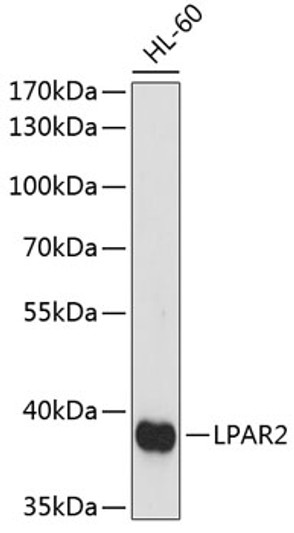| Tissue Specificity | Prominently expressed in developing osseous and cartilaginous tissue. Also found in adult parathyroid glands. Expressed in cardiovascular system, brain, kidney, gastrointestinal tissues and myeloid tissues. Expressed in a broad array of tissues associated with hematopoietic and immune function including, spleen, thymus, appendix, lymph node, bone marrow and fetal liver. Among leukocyte populations abundant expression in monocyte-derived macrophage and immature dendritic cells (DCs). High expression in blood monocytes and low levels in polymorphonuclear cells and T-cells. Expressed on endothelial cells. Highly expressed in differentiating adipocytes. |
| Function | Receptor for the chemoattractant adipokine chemerin/RARRES2 and for the omega-3 fatty acid derived molecule resolvin E1. Interaction with RARRES2 initiates activation of G proteins G(i)/G(o) and beta-arrestin pathways inducing cellular responses via second messenger pathways such as intracellular calcium mobilization, phosphorylation of MAP kinases MAPK1/MAPK3 (ERK1/2), TYRO3, MAPK14/P38MAPK and PI3K leading to multifunctional effects, like reduction of immune responses, enhancing of adipogenesis and angionesis. Resolvin E1 down-regulates cytokine production in macrophages by reducing the activation of MAPK1/3 (ERK1/2) and NF-kappa-B. Positively regulates adipogenesis and adipocyte metabolism. (Microbial infection) Acts as a coreceptor for several SIV strains (SIVMAC316, SIVMAC239, SIVMACL7E-FR and SIVSM62A), as well as a primary HIV-1 strain (92UG024-2). |
| Protein Name | Chemerin-Like Receptor 1Chemokine-Like Receptor 1G-Protein Coupled Receptor Chemr23G-Protein Coupled Receptor Dez |
| Database Links | Reactome: R-HSA-373076 |
| Cellular Localisation | Cell MembraneMulti-Pass Membrane ProteinInternalizes Efficiently In Response To Rarres2 |
| Alternative Antibody Names | Anti-Chemerin-Like Receptor 1 antibodyAnti-Chemokine-Like Receptor 1 antibodyAnti-G-Protein Coupled Receptor Chemr23 antibodyAnti-G-Protein Coupled Receptor Dez antibodyAnti-CMKLR1 antibodyAnti-CHEMR23 antibodyAnti-DEZ antibody |
Information sourced from Uniprot.org








